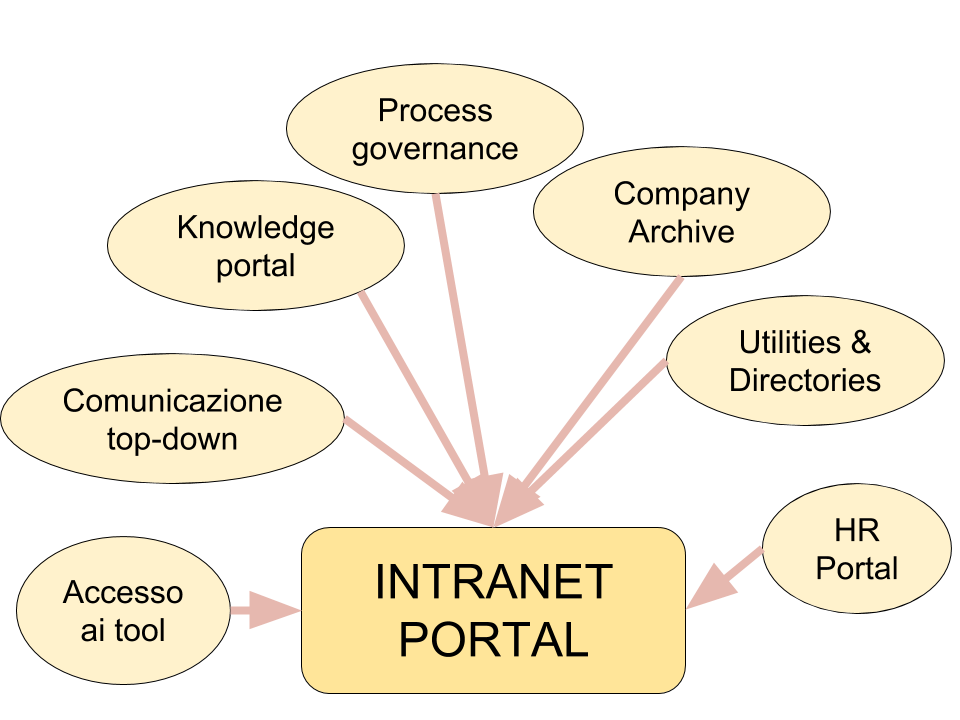CORPORATE INTRANET: how do we manage them?
With the introduction of an Intranet, the nature of the organization changes from hierarchical to functional. In this type of organization the fundamental assets are the sharing of knowledge and the ability to innovate.
Three types of intranets
Institutional Intranet, Intranet Operative and of Knowledge Management
Institutional Intranets: essentially aimed at supporting the value chain (internal communication [Top -> Down and Bottom -> Up] human resource management, administration and control, facility management, press reviews, bulletins, news on company life , employee directory, product information, IT Help Desk, library counter, e-Learning, etc.)
The Institutional Intranet can have a dual purpose:
i) increase the sense of belonging of employees to the company and develop a common vision and corporate culture,
ii) simplify e reduce costs some procedures aimed at personnel.
The Intranet Operative born to support the primary activities of the value chain (operations, sales, marketing, etc.).

The objectives can be efficiency objectives, linked to the automation of certain activities or effectiveness objectives, linked to the increase in the quality of a process (for example, in the case of a Customer Relationship Management application, better customer service thanks to broader information base available to commercial staff).
In the Operational Intranets, which are often indispensable tools for users to operate, dissatisfaction risks leading to discontent and organizational conflicts.
The problems encountered concern the poor coherence of user interfaces, with obvious repercussions on usability, and the difficulty of putting infrastructure services in common, such as authentication (making the creation of a Single Sign On system problematic).
The Intranet of Knowledge Management are aimed at favoring the accumulation, archiving and sharing of knowledge in a business; they often have a transversal value with respect to processes.
They provide document management support functions (archiving, indexing, correlation, versioning, search).
The main intent is to encourage better sharing and capitalization of knowledge within the company
